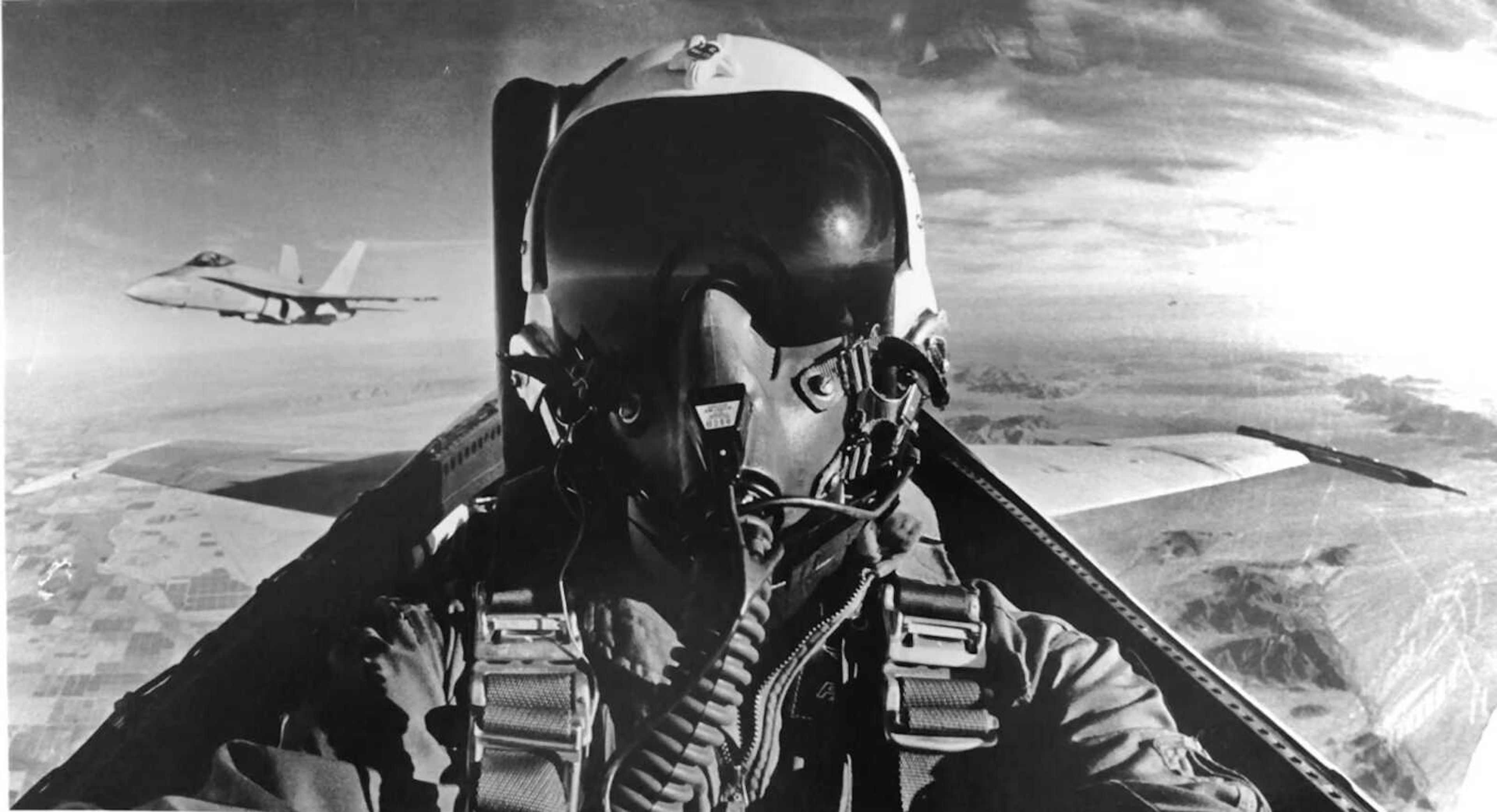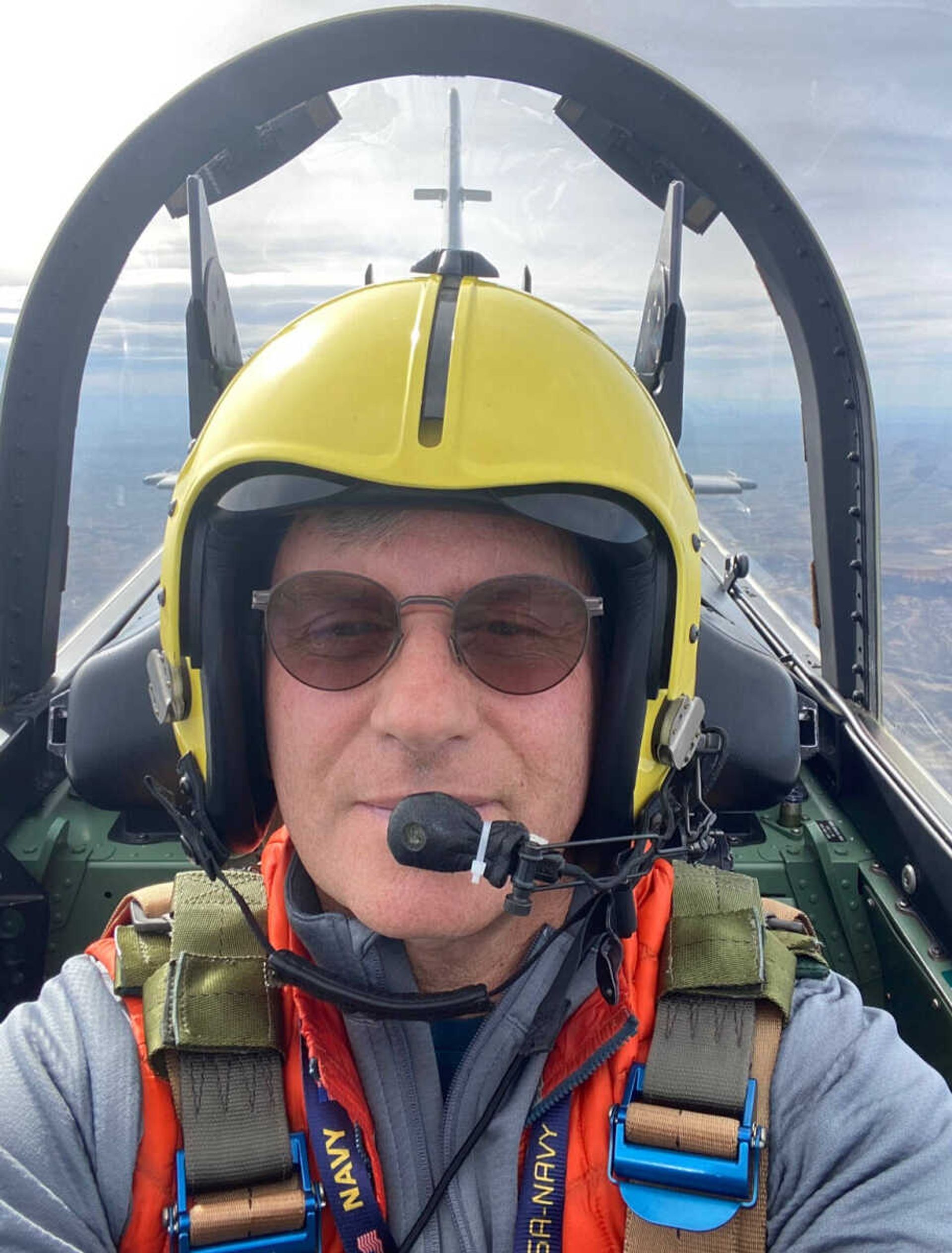TOP GUN: Local pilot shares stories from lifelong flying career
The script of Tom Trotter’s life has been like a blockbuster. It starts in the blue-collar steel town of Pueblo, Colo., in the 1960s. As a boy, Trotter didn’t dream of a future at Colorado Fuel and Iron, one of the state’s largest employers. He had loftier ambitions...
The script of Tom Trotter’s life has been like a blockbuster.
It starts in the blue-collar steel town of Pueblo, Colo., in the 1960s.
As a boy, Trotter didn’t dream of a future at Colorado Fuel and Iron, one of the state’s largest employers. He had loftier ambitions.
Back then, commercial pilots training for United Airlines traversed the mostly-empty skies from Denver to Pueblo, and Trotter would hang around the airport watching them complete their ground controlled approach patterns. As he did, he noticed the contrails of high-flying jets criss-crossing above and looked forward to a time he could join them.
“I would think, ‘They are going interesting places,’” he says. “That’s all I wanted to do.”
By the time Trotter was ready to go to college, he had earned a U.S. Navy ROTC scholarship to the University of Colorado. The Navy wanted him to study aerospace engineering. He simply wanted to be a pilot. After earning a business degree and top ranking in his class, Trotter was off to the Navy for flight training in Pensacola, Fla.
With just over 100 hours of flight experience, Trotter had his first taste of landing on a carrier at-sea in the Gulf of Mexico.
“There’s a guy who leads you out there, but he’s not in the same airplane as you,” Trotter says. “He’s not as stupid to be in the same airplane as a student who is throwing himself at a carrier deck.”
By 1978, Trotter had earned his coveted Wings of Gold and set off to fly the F-14 Tomcat at Oceana, Va. With only a couple hundred hours of flight training under his belt, he found himself at the “Tip of the Spear” in the Indian Ocean flying the F-14 Tomcat from the USS Eisenhower, CVN-69 in support of the Iranian Hostage Rescue Mission in April 1980.
__Trotter’s military career__
Trotter’s first combat deployment set the tone for his military and civilian career, in which he often found himself living a life art and the big screen would later imitate.
After his first tour of duty, the Navy chose a new path for Trotter, in which he learned to fly the Navy’s newest fighter, the FA-18 Hornet, an aircraft in which he would spend 17 years of his 24-year Navy career. Then, it was off to Naval Air Station Lemoore in California.
From there, Trotter attended the Navy’s Fighter Weapons School, popularized in the “Top Gun” movies starring Tom Cruise. Later, he returned to the Miramar, Calif., school as its 20th commanding officer.
As his career progressed, he served a stint at the U.S. Space Command/North American Aerospace Defense (NORAD) in Colorado, where he served as an inspector for five shuttle launch missions.
There, he served as an air wing commander in charge of nine embarked squadrons, encompassing more than 2,000 people and 87 embarked aircrafts. On an aircraft carrier of 5,000 personnel, that made him one of the two highest-ranking officers.
“You are one of two captains on the ship,” Trotter says, noting the division of duties between the commanding officer in charge of the carrier and himself in charge of the carrier air wing. “The captain has the air base and hotel, and we bring the fighting power.”
Fighter jets have incredible power, Trotter says. He describes the F-14 Super Tomcat, whose 54,000 pounds of thrust exceeds the total power of the entire 33-car field in an Indy car race.
“The power is a little addictive,” he says.
Though Trotter wistfully describes his military career as a series of near-misses with heavy combat — being in the right place at the wrong time — he has had his share of “interesting” experiences.
“No one joins the NFL to practice,” he says. “Sometimes, you don’t know when there is going to be a game. Toward the end of my career, there were some games.”
He completed 38 combat missions in Iraq as part of operations Desert Shield and Southern Watch. One mission, though, never materialized.
“I led a very big one. There were MIGs airborne. We were going to let them have it under unusually liberal rules. They are usually very restricted, but we kinda knew who they were and what they were doing, but the tanker couldn’t get us fuel,” he says of the battle that never was.

__Stories from military service__
While maintaining close contact with Russian bombers in 1980 — a common practice — Trotter saw one of the Russians hold a piece of paper up to his cockpit. Written on the paper was the score of a hockey game later known as the Miracle on Ice. The U.S. men’s team had beaten the Soviet Union in the Winter Olympics.
“He kind of made this congratulatory gesture. That was the first we knew of the score,” Trotter says.
Trotter notes the brotherhood of military pilots that is built on mutual respect, even for those on opposing teams.
With more than 1,200 carrier landings under his belt — 1,278 to be exact — Trotter points to one particular situation among his most challenging: During carrier operations in the Bering Sea, 75-knot winds were pitching the carrier’s deck 52 feet from each wave’s crest and trough. The ship’s props, which are normally 25 feet below the water’s surface, were at times visible.
“We were only successful landing one in four tries,” he says. “Seeing those props got your attention.”
As a general rule, he says carrier landings at night were routinely the most difficult.
“It’s a high-risk game, and it’s hard. It’s the hardest thing you’ll ever do in aviation. Well, maybe landing on the moon,” Trotter says.
Trotter counts his time as a squadron commander of an F-18 squadron and the commander of TOPGUN as among his most enjoyable military experiences.
“That is the most rewarding,” he says. “Getting command. There are about 220 people. You know everybody.”
Trotter notes today’s aircrafts have technological capabilities that have revolutionized the air battlespace. He points to the stealth F-35, which counts among its advances the ability to share tremendous amounts of real-time data with other platforms. All that information allows the Navy to attack from afar instead of the up-close dogfights of previous generations.
“Who wants to be in an engagement? I want to know something where I am long-distance and employ weaponry from a long distance, so I never get to that point. A dogfight is a poorly-run intercept,” he says.

__Flying in retirement__
Trotter retired from the Navy in 2000 as a captain, an O-6 officer — the equivalent of an army colonel — but his flying days were far from over.
As a pilot for private companies, Trotter has flown all over the world for the past 23 years — including Central and South America, Europe, Australia and Asia —in a career somewhat beholden to market forces.
“When the markets are going, the economy is booming, they are buying jets. When the economy falls off, they are selling jets. I’ve seen that several times,” he says.
For four years, he was an Alaskan bush pilot.
Flying is his pastime, one that has allowed him to earn a living doing what he most enjoys.
“I am pretty happy with what I have accomplished. I would love to fly a 747, but I never have. But, there isn’t much flying that I haven’t done,” he says. “I go fly. That is my form of relaxation. Back-country flying in Idaho — that is the purest form of flying, with those tail-wheel planes. You can land somewhere so remote no one has been fishing there before. My passion has been my profession for the vast majority of my adult life.”
Trotter now makes his home in Cape Girardeau. His journey to Southeast Missouri began in Eagle, Colo., when a local magazine owner and publisher wanted to write a feature story about the fighter pilot. The writer, Jill Trotter Wilferth, became a friend and then his wife.
The couple moved to her hometown a little more than a year ago.
“We had been coming here for seven or eight years. I have aviation buddies here. It’s a great place for me to settle,” Trotter says.
Having flown some of the most storied aircrafts in the U.S. military’s history and continuing to fly around the world as he nears his 69th birthday, would Trotter change anything about his career?
“I think I would go backward and get that aerospace degree,” he says. “It would have opened up the opportunity to be an astronaut. ... Space is pretty fascinating.”
Connect with the Southeast Missourian Newsroom:
For corrections to this story or other insights for the editor, click here. To submit a letter to the editor, click here. To learn about the Southeast Missourian’s AI Policy, click here.











